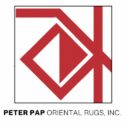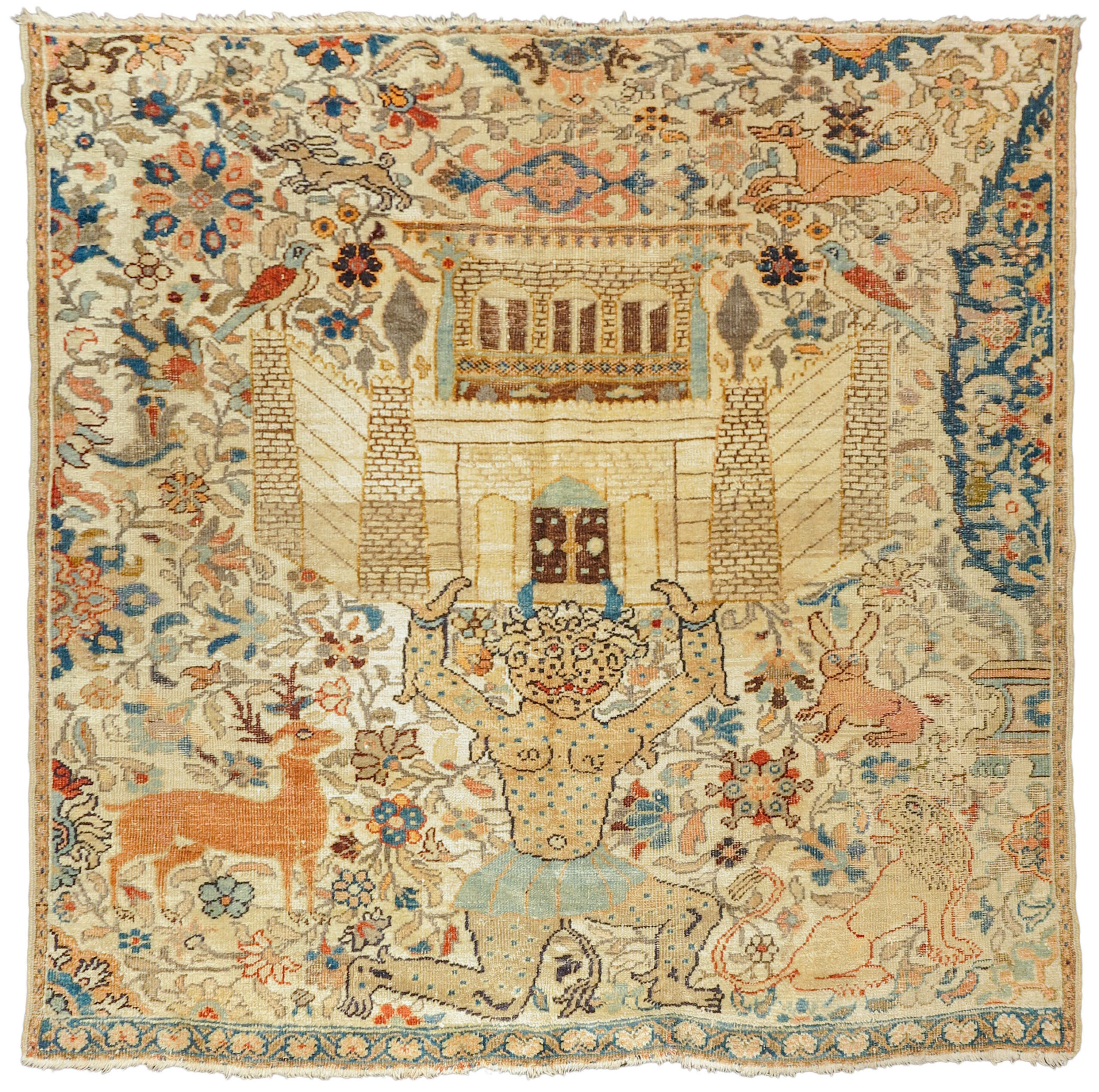Mahal pictorial rug
| Dimensions | 5'3" x 5'7" |
|---|---|
| Origin | |
| Period | |
| Provenance | Formerly in the collection of James Opie |
$6,750.00
Availability: In stock
The Div-i Sefid, or White Demon, is a familiar character from Persian mythology. According to the ‘Shahnameh’, the Persian ‘Book of Kings’ composed in verse by the poet Ferdosi between 977 and 1010 CE, this malevolent character was the leader of a group of magical demons with super-human strength that tormented the people of the kingdom. The Div-i Sefidwas finally slain by the hero Rustam who then wore the monster’s skull as a helmet. While written down only one thousand years ago, there is ample evidence that the legends described in Ferdosi’s epic can be traced back well into the pre-Islamic Zoroastrian past of Iran.
This unusual Mahal rug from central Persia depicts a demon-like figure drawn in the manner of the legendary ‘divs’ of the ‘Shahnameh’ holding up what looks like a walled city or palace complex. Within the background are a host of animals as diverse as a lion, rabbits, birds, a deer and a fox. This veritable bestiary is drawn within a lush verdant landscape with a variety of blossoming plants, vines, and even a cypress tree. Here, however, the intentions of the demon character seem unclear. Is he attacking the complex or holding it up in the manner of an Atlas? Indeed, the idyllic landscape in the background seems at odds with any potential impending destruction. It should be noted, however, that this disjuncture between plot and its artistic rendering is fairly common in Persian painting, particularly miniatures where violent or disturbing subjects are frequently depicted with beautiful and harmonious backdrops. Here as in the case of the Persian art of the book, while the story may be scary or foreboding, its artistic rendering is still pleasant and uplifting. The square shape of this figural piece is unusual as well and may be evidence that the rug was woven as a hanging.
Condition Report
Area of wear. Partial loss of outer guard border both ends. Exposed warp knots. Oxidation in light brown.

